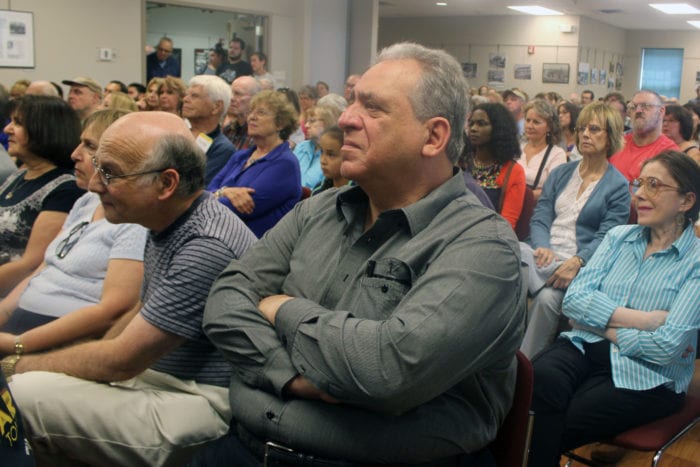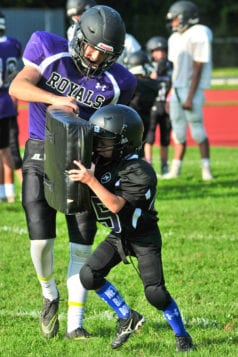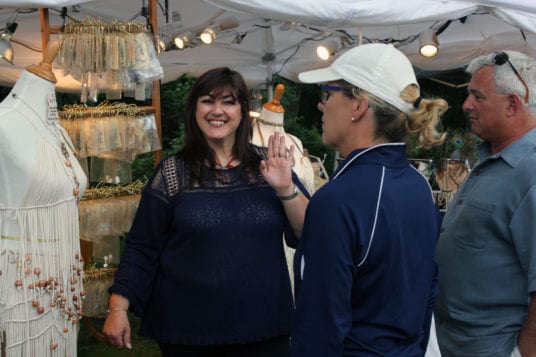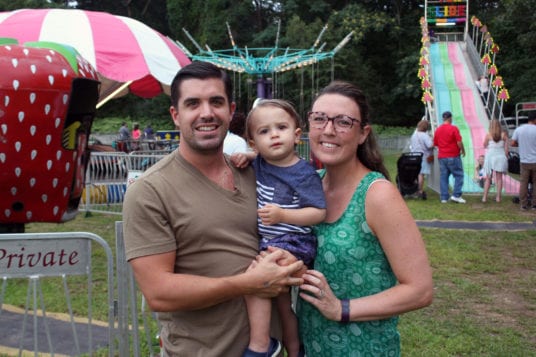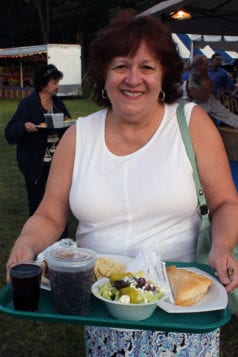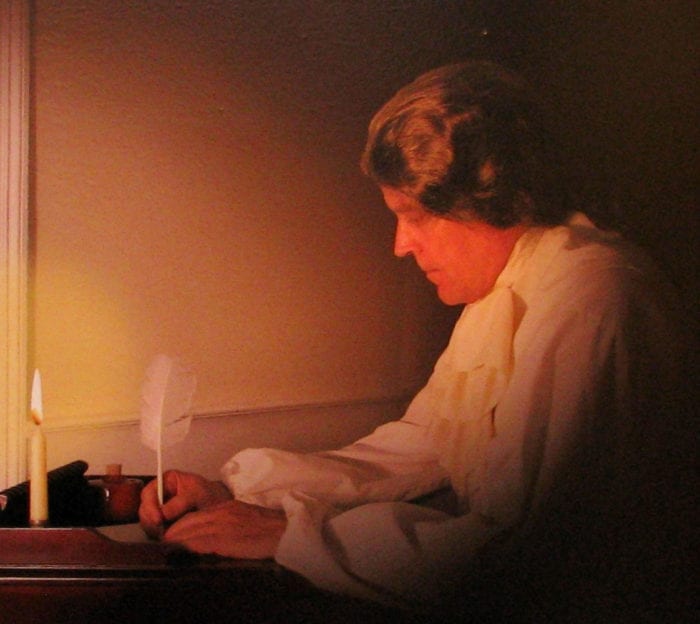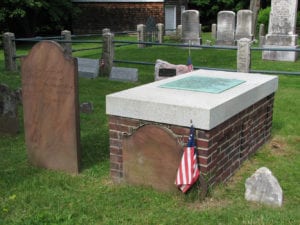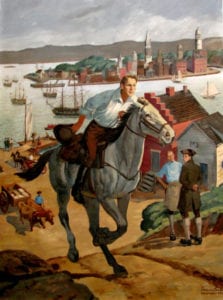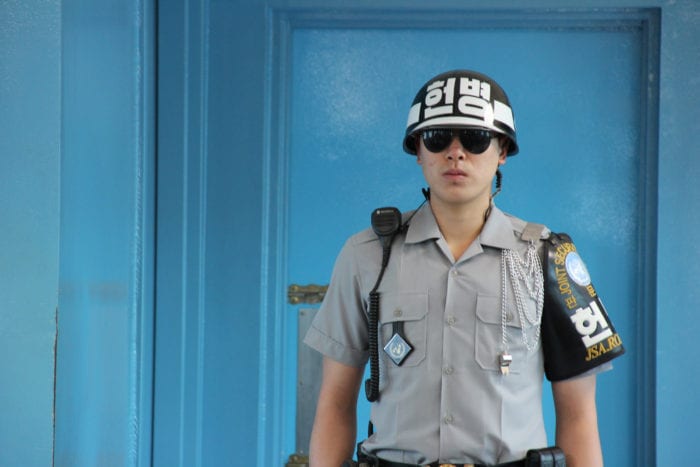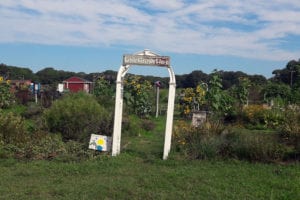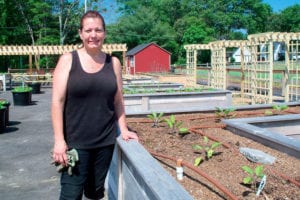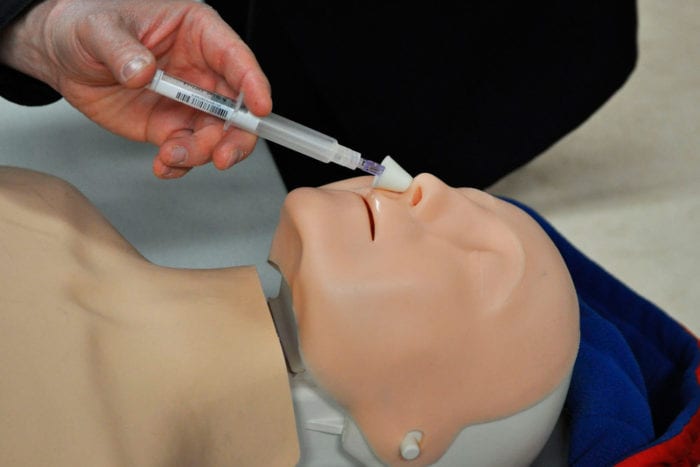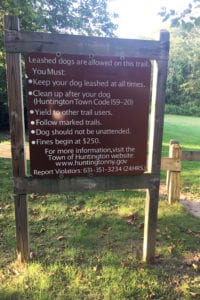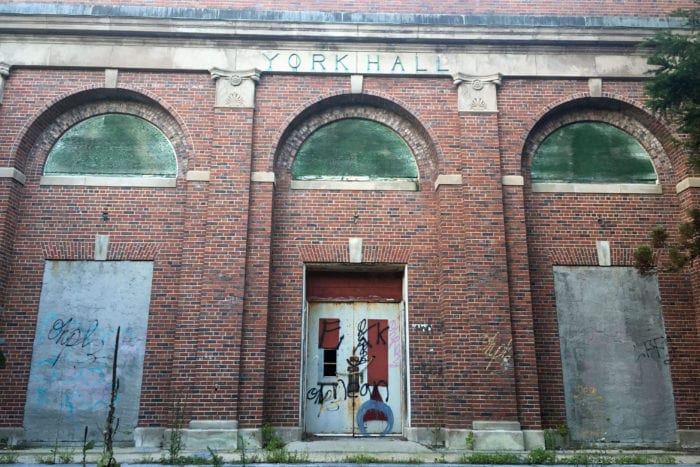By Kevin Redding
More than 100 years after his great-grandfather designed and oversaw the construction of Nikola Tesla’s Wardenclyffe laboratory in Shoreham, Sebastian White, a renowned physicist and St. James native, filled a local lecture hall to discuss all things surrounding the Serbian-American inventor.
White, whose famous ancestor Stanford White’s architectural achievements include Washington Square Arch, the original Madison Square Garden and what is now the Tesla Science Center, took time out of his busy schedule as a particle physicist for CERN — the European Organization for Nuclear Research — to engage a roomful of science lovers Aug. 27.
The presentation was in conjunction with the center’s summer-long Tesla exhibit in Stony Brook and ended with a screening of clips from “Tower to the People,” a documentary made by a local filmmaker about the laboratory.
The physicist, and chairman of the Tesla Science Center’s Science Advisory Board, examined the litany of Tesla influences in modern-day technology and the late-19th century culture that helped shape his genius.
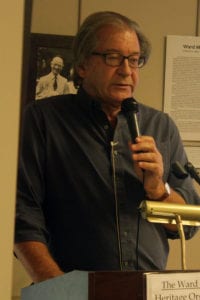
“Today it’s very clear that Tesla is trending in much of the science that’s showing up, such as wireless transmission of energy, which is a new field, and the Tesla car, but I think we shouldn’t only remember him for what he did, but also the incredible time in America he became part of,” White told the 130 residents packed into the lecture hall on the top floor at The Ward Melville Heritage Organization’s Educational & Cultural Center. “I think the story of Tesla, who many of my colleagues don’t even know, is an important one as it tells us how we got to where we are.”
White explained how Tesla’s grand vision for wireless transmission of energy, which eventually culminated in a torn-down tower on the Shoreham site in 1917, remains a much-pursued concept.
“There’s a very lively industry happening today, mostly because people keep forgetting to charge their iPhones and they want to find a way to do it without needing cords,” he said.
Through a process called energy harvesting, industry scientists are actively working on ways to charge cellphones while they sit inside pockets by capturing energy just from the environment.
“It’s an enormous field now — new companies are very interested in it and a lot is happening,” White said, pointing out other examples of wireless power transmissions over the years. “In 1964, on the Walter Cronkite TV show, a guy named William C. Brown demonstrated a model of an electric helicopter powered by a microwave. The United States, Canada and Japan have experimented with airplanes powered by radio waves. I would say, probably, if Tesla were around today, he’d be more happy about all the things people are inventing with new techniques rather than always quoting him and saying, ‘Well, Tesla said this.’”
White said Tesla’s emergence as one of the most influential scientific minds of all time coincided with what he referred to as “an incredibly important time” in the late 1800s, a period referred to as the American Renaissance.
Among the prolific figures with whom Tesla interacted were writer Mark Twain, physicist Ernest Rutherford, American businessman John Jacob Astor IV, and, of course, Stanford White. The physicist said a huge year for Tesla was 1892, when he lectured and demonstrated his experiments at the Institution for Electrical Engineers at the Royal Institution in London.
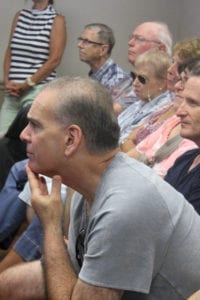
Speaking on his great-grandfather and Tesla’s friendship, which proved itself through many projects prior to Wardenclyffe, White referred to one particular exchange.
“Stanford White [once] invited Tesla to join him for an outing with William Astor Chanler, an explorer,” he recounted. “Tesla said, ‘I’m busy in the lab.’ White kept pushing him and then wrote to him, ‘I’m so delighted that you decided to tear yourself away from your laboratory. I would sooner have you on board than the Emperor of Germany or the Queen of England.’”
David Madigan, a Tesla Science Center board member, said after the lecture that having White’s perspective on this near-and-dear subject was integral.
“It’s important having Dr. White give the talk, who’s a physicist himself and whose grandfather was Stanford White, who was intimately involved in Tesla’s advancement of his many ideas both as an investor and also as an architect,” Madigan said. “It’s a good triangulation of today’s event, the Tesla exhibit, and Dr. White bringing in the scientific and family history.”
White said he has always felt a strong connection with his great-grandfather, who had a home in Smithtown, since he was young.
“He was part of our life for sure,” he said. “We all felt very close to him. My son is an architect, my aunt and uncle were architects, my grandfather was an architect, and even continued in the same firm.”
East Setauket resident Michael Lubinsky said he was drawn to the lecture through a lifelong interest in Tesla.
“I always felt that Tesla was not appreciated that much in his time,” Lubinsky said, laughing that much of the lecture went over his head with its scientific terms.
Paul Scala, a software engineer living in Centereach, said he too gravitated to the event to explore more of Tesla’s story.
“I think [Dr. White] did a very nice job,” he said. “It’s very cool seeing that in the tech world they’re still trying to harness wireless energy.”

